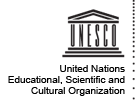Nowadays there is no exact information about the quantity of local television stations broadcasting in the country, neither renting small air-time spaces to the biggest companies nor remaining in local companies. This situation also means an insufficient effort for local production and a big opportunity for foreign programming. National broadcasting of knowledge about Nicaragua and Nicaraguans, their culture, customs, facts, places, etc., through television is practically inexistent and this both facts together implies a transculturization of the audience and of course a lack of cultural...
Regions: Latin America and the Caribbean
In terms of journalism training programs, very few universities offer a degree in the specialty. Journalism courses are usually part of a Social Communication degree. Mid-career training is not part of the culture. Media companies are reluctant to pay, and the journalists are too poorly paid to afford it themselves. This project will train citizen journalists and professional journalists to access, organize and publish information on land use, water resources and development issues. It will also train them at established media outlets how to mobilize their audiences to help them in these...
In El Salvador, after the civil war and the Peace Accords (1992), there has been a new era for democracy and the implementation of new media outlets. However, some of these media projects, over time, have disappeared and others still face critical financial challenges for sustainability. Today, there are about 200 radio stations in the AM and FM bands -20 of these stations are self-defined as community radio, 4 major daily newspapers, about 16 television stations in VHF and UHF, and at least 3 online weekly newspapers. Nevertheless, there are some concerns about the level of media...
In Costa Rica, medias are well developed, but they do not always coincide with the democratic spirit of the country. It counts with almost 110 radio stations that broadcast their programmes, but they are still generally concentrated in the central part of the country, although the community radios make the exception. There is a large variety of weekly reviews and publications, but their news coverage remains limited, and sometimes with very low quality. The new media tools, based on the Internet, begin to get certain relevance, although it is still below the level reached by more developed...
Like its American counterparts, many Mexican and Central American newspapers will likely fall in hard times due to reduced circulation and advertising, these developments themselves caused by the challenges that the Internet and new technologies pose for the newspaper industry. Amid all these challenges, quality investigative reporting, which is very expensive to produce, will likely be neglected. Though time- and resource-consuming as it is, sound investigative journalism is much needed in the region's corruptionplagued, fragile democracies. These developments occur against a backdrop of...
The communities in the south are isolated and indigenous ? Mopan and Q'eqchi' Maya. Unfortunately, radio cannot reach many of these villages due to the terrain. This is particularly problematic because these villages also are home to poor, marginalized indigenous people who need access to information and communications technologies. It is imperative that local Maya receive accurate and up-to-date information. Given its accessibility and cost-effectiveness, community radio represents a democratic and participatory medium. People can be united by community radio. Tumul K'in Learning Center...
Ecuador has more than 1000 FM or AM radios. Only 10 of them carry programs in Kichwa. Regarding the written media, there are 45 daily newspapers all in Spanish, with two of them in the Imbabura Province: El Norte and La Verdad. There are no daily nor weekly newspapers in Kichwa language in Ecuador. In this context, the Kichwa Indian population finds it difficult to make its voice heard. The commercial newspapers monopolize virtually all advertising, depriving community publications of the necessary support and restraining media plurality, thereby questioning the development and use of...
In the provinces of Peru, radio station owners ?frequency permit holders-- rent time space indiscriminately. This practice constitutes a critical problem as far as journalistic practices are concerned, and is criticized by journalists and citizens alike because it is the vehicle used by journalists and pseudo journalists to slander and undertake smear campaigns, defame o blackmail authorities and citizens in exchange for money. It is this recurrent anomaly, related to journalism and ethics, which demands attention and change, in order to gain leeway in the work towards promoting an...
Given ALER's capacity and impact in Latin America, through its daily work sustained by its networks?concretely the Continental Information Network?it is absolutely necessary to the develop skills in its media practitioners to enable them to utilize ICTs to strengthen their journalistic work. So, ALER is seeking the ownership and management of ICTs, new ways of interacting with our audiences (having traditionally linked to them through our broadcasting practice), empowerment of citizens to exercise their rights and the use of technology as an instrument to mobilize traditionally...
This project contributes to encouraging the involvement of young people in the area of communication, as a strategy to construct citizenship, increasing the capability for producing qualitative broadcasting and to allowing UNI RADIO to participate in the exchange of learning skills with other social actors to generate knowledge that should be socially useful and valid. It aims to provide training to sixty young people, belonging to four different communicational projects in the entire country. They will then be in a position to produce and edit their radio messages digitally, after...
